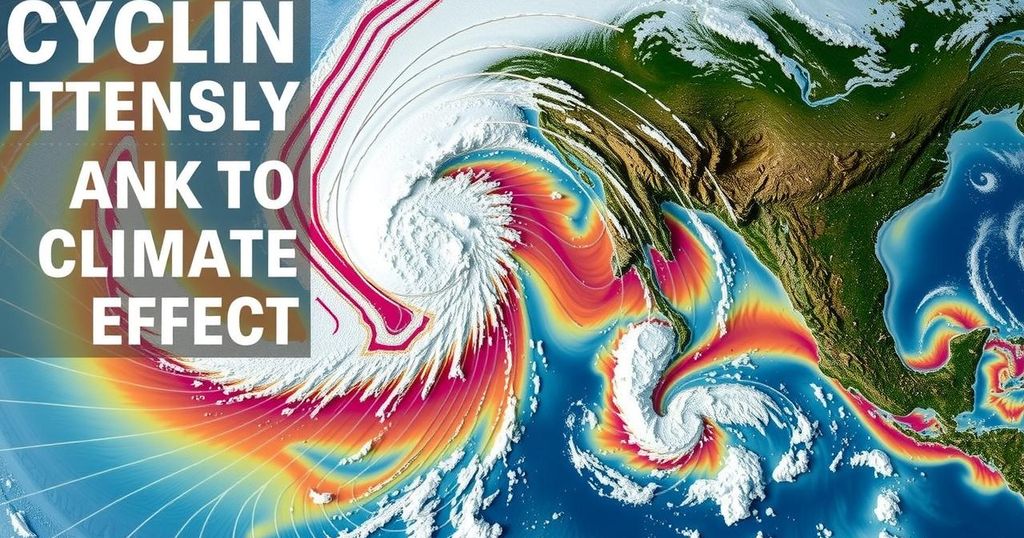World news
AFRICA, ASIA, CHI, CHIDO, CLIMATE, CLIMATE CHANGE, GLOBAL WARMING, MAYOTTE, MILTON, NATURAL DISASTERS, PHILIPPINES, ROBERT VAUTARD, UNITED NATIONS, UNITED STATES NATIONAL OCEANIC AND ATMOSPHERIC ADMINISTRATION, US, WEST PACIFIC, WMO, WORLD METEOROLOGICAL ORGANIZATION
Fatima Khan
0 Comments
Steady Number of Cyclones; Intensified Storms Linked to Climate Change
The number of tropical cyclones has remained steady at an average of 47 per year since 1980; however, their intensity has increased, with average maximum wind speeds rising from 182 kph to 192 kph. The frequency of category five storms has also grown significantly, now affecting more communities due to climate change, as indicated by the IPCC.
Recent data indicates that while the frequency of tropical cyclones has remained consistent over the last forty years, their intensity has markedly increased. According to global data coordinated by the National Oceanic and Atmospheric Administration (NOAA), an average of 47 tropical cyclones, commonly referred to as hurricanes or typhoons, has occurred annually since 1980. In contrast to this steady frequency, there is a documented rise in the intensity of these storms.
A comparison of data from the periods of 1981-2010 and the last decade shows a 5 percent increase in the average maximum wind speed of cyclones, escalating from 182 kilometers per hour (kph) to 192 kph. Moreover, the occurrence of category five cyclones on the Saffir-Simpson scale has increased significantly, from one in ten cyclones to 1.4 in ten, marking a notable 40 percent rise in the most destructive storms.
This phenomenon is attributed to climate change, as stated by the United Nations’ Intergovernmental Panel on Climate Change (IPCC), which projects a rise in the frequency of severe cyclones. Climatologist Robert Vautard emphasizes that the humanitarian crises resulting from cyclones are exacerbated by factors such as poverty and lack of preparedness within affected communities.
The year 2024 highlighted some of the most impactful storms, with 42 tropical cyclones recorded by mid-December, including Hurricane Milton, which struck the U.S. coast with wind speeds reaching 278 kph. The West Pacific was especially affected, recording 15 typhoons, while Cyclone Chido caused tragic loss and injury in Mayotte, showcasing the devastating impacts of intensified storms on vulnerable regions.
The phenomenon of tropical cyclones, which include hurricanes and typhoons, has been a subject of great concern among climatologists due to the dual issues of the frequency and intensity of these weather events. Over the last four decades, the average annual number of cyclones has maintained a steady rate; however, contemporary studies reveal that the strength of these storms is on the rise. Climate change is identified as a contributing factor to this increasing intensity, with global data supporting these findings and noting the greater humanitarian consequences for populations in vulnerable regions.
In summary, while the number of tropical cyclones has not increased in frequency over the past forty years, their intensity has significantly escalated, raising concerns about the potential humanitarian crises stemming from these storms. With data indicating a rise in maximum wind speeds and the frequency of category five storms, it is critical to recognize the role of climate change in these trends and address the vulnerabilities faced by affected populations to mitigate future disasters.
Original Source: www.rfi.fr




Post Comment